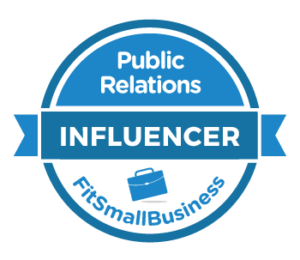Further to my post Innovative Minds Paradox in Tech PR and Social Media: Building Better Memes, I had the pleasure of reading more about the ideas from the book mentioned in the post (
“Made to Stick: Why Some Ideas Survive and Others Die.”), via an interview with co-author Chip Heath that just ran on
Scott Goodson’s blog.
Some of his tips for crafting “Sticky Ideas” are:
- Make your Ideas concrete and use simplicity in story telling.
- On keeping things simple, he says:
…effective leaders are masters of simplicity. I’m not talking about dumbing down a message or turning it into a sound bite; I’m talking about identifying the most central, core elements of strategies and highlighting them.
- On the power of stories, he says:
Take an abstract message, like “Maximize shareholder value.” What should one of your employees do tomorrow to make that happen? Now contrast that abstraction with the stories told at FedEx. One of them features a driver who couldn’t open one of the pickup boxes on his route—he’d left the key back at the office. His deadline was tight and he knew that by the time he could get his key and return to the box, the packages in it were going to miss the plane. So he got a wrench, quickly unbolted the whole box, and muscled it onto his truck, knowing he’d be able to unlock it back at the office! That’s the kind of behavior you want when your competitive advantage is “absolute, positive reliability.” That’s how you’re going to maximize shareholder value in the long run. But telling FedEx drivers to maximize shareholder value just leaves them hanging. The story tells them how to act.
According to Heath, effective stories are “portable.” This means they work well across various types of audiences and form factors (using the memetics metaphor, they can jump hosts).
On this topic he disputes Marshall McLuhan’s famous assertion that The Medium is the Message.
…but with all due respect his slogan is wrong. In truth, the message is the message. People who think too much about the medium—opt-in newsletters, the Internet, Web 2.0—are making the same mistake that people have made for years in education. Remember how the 8-millimeter film was going to revolutionize education? Then the VCR? Then the personal computer? The medium can certainly help, but an 8-millimeter film didn’t salvage a bad math lesson.
Here, I agree with Heath in some ways and disagree in others.
On the one hand, this sounds not too far removed from what I have been saying about newfangled schemes for elevating content (see my post PR Blinded me with Science). If you believe Heath, and what I also have been saying, the story trumps the wrapper and delivery mechanism.
It also validates my argument that narrative is important in PR, and new press release formats that aim to communicate through bullet points, links, tags, etc. – i.e., that try to “remove spin and give just the high level facts” – are ill advised.
On the other hand, how you say it – the medium – can be extremely important as well. Calling something “news” and issuing a press release over the wires can have a dramatic impact on how the information is received and where it is featured.
And, although his example about the failed promised of older technologies to transform education is interesting, it seems pretty obvious that social media is transforming journalism (and by association, PR).
So yes, technology can greatly amplify reach and distribution – but, as Heath might say – is anyone listening? True, your information may be in more places but what is the impact?
This brings us right back to the need to focus on better story telling and sticky ideas.


